GLOBE COMMUNITIES include the developing nations where loans are destined, the University community in which the program is lodged, and civil society with whom we share common interests and values in creating positive and transformative change in the world.
International Projects
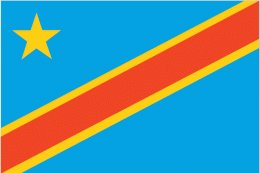
The Democratic Republic of the Congo (DRC) is located in Central Africa, Northeast of Angola. The climate is tropical in the river basin and cooler and drier in the southern highlands. Natural resources include cobalt, copper, industrial and gem diamonds, gold, silver, manganese, tin, uranium, coal, hydropower, and timber. The government is a republic and has based its civil law on Belgian law. DRC declared independence on June 30, 1960. The Congo has a population of 89,561,404 people and is ranked 16 in comparison with the world (World Bank 2020 est.). The languages spoken are French, Lingala, Kingwana, Kikongo, and Tshiluba. The main industries in The Congo are mining, mineral processing, consumer products, cement, and commercial ship repair.
GDP (purchasing power parity):
$101.3 billion (World Bank 2020 est.)
Country comparison to the world: 103
*Data are in 2020 US dollars
GDP - per capita (PPP):
$1,131.10 (World Bank 2020 est.)
Country comparison to the world: 226
Currency:
1 United States Dollar = 2,001 (2021 est.) Congolese Francs (CDF)
Inflation rate (consumer prices):
10.3% (World Bank 2020 est.)
Population below poverty line:
63% (World Bank 2014 est.)
Environment:
Current issues: poaching threatens wildlife populations; water pollution; deforestation; refugees responsible for significant deforestation, soil erosion, and wildlife poaching; mining of minerals (coltan - a mineral used in creating capacitors, diamonds, and gold) causing environmental damage
Infant Mortality Rate:
Total: 66.1 deaths/1,000 live births
Male: 72 deaths/1,000 live births
Female: 59.9 deaths/1,000 live births (World Bank 2019 est.)
Country comparison to the world: 8
Life Expectancy at Birth:
Male: 60 years
Female: 63 years (UNFPA 2021 est.)
Total Fertility Rate:
5.6 children born/woman (UNFPA 2021 est.)
Country comparison to the world: 3
Literacy:
Definition: age 15 and over can read and write
Total population: 77%
Male: 88.5%
Female: 66.5% (World Bank 2016 est.)
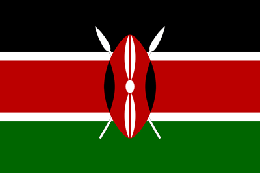
Kenya is located in Eastern Africa, bordering the Indian Ocean, between Somalia and Tanzania. The climate varies from tropical along the coast to arid in interior sections. Some natural hazards are recurring drought and flooding during rainy seasons. Natural resources include limestone, soda ash, salt, gemstones, fluorspar, zinc, diatomite, gypsum, wildlife, and hydropower. The government is a republic. Kenya declared independence from the UK on December 12, 1963. Kenya has a population of 53,771,300 people and is ranked 29 in comparison with the world (World Bank 2020 est.). One thing to note is that this total takes into account the mortality rates due to AIDS. The languages are broken down in the following manner: English (official), Kiswahili (official), and numerous indigenous languages. The most popular industries are small-scale consumer goods (plastic, furniture, batteries, textiles, clothing, soap, cigarettes, flour), agricultural products, horticulture, oil refining; aluminum, steel, lead; cement, commercial ship repair, and tourism. According to a 2015 estimate, 36.1% of the population is below the poverty line.
GDP (purchasing power parity):
$239.4 billion (World Bank 2020 est.)
Country comparison to the world: 74
*Data are in 2020 US dollars
GDP - per capita (PPP):
$4,452.21 (World Bank 2020 est.)
Country comparison to the world: 187
Currency:
1 United States Dollar = 110.4 (2021 est.) Kenyan Shillings (KES)
Environment:
Current issues: water pollution from urban and industrial wastes; degradation of water quality from increased use of pesticides and fertilizers; water hyacinth infestation in Lake Victoria; deforestation; soil erosion; desertification; poaching
Infant Mortality Rate:
Total: 31.9 deaths/1,000 live births
Country comparison to the world: 57
Male: 34.9 deaths/1,000 live births
Female: 28.5 deaths/1,000 live births (World Bank 2019 est.)
Life Expectancy at Birth:
Male: 65 years
Female: 70 years (UNFPA 2021 est.)
Total Fertility Rate:
3.3 children born/woman (UNFPA 2021 est.)
Country comparison to the world: 42
Literacy:
Definition: age 15 and over can read and write
Total population: 81.5%
Male: 85%
Female: 78.2% (World Bank 2018 est.)
Unemployment rate:
5.01% (World Bank 2019 est.)
Country comparison to the world: 214
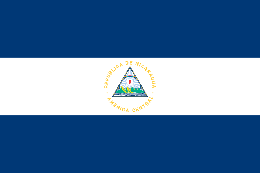
Nicaragua is located in Central America, bordering both the Caribbean Sea and the North Pacific Ocean, between Costa Rica and Honduras. The government is a republic. Nicaragua gained independence from Spain in 1821. Nicaragua’s total population is 6,624,554 (World Bank 2020 est.). The languages spoken in the country are Spanish, Miskito, and others. It has a tropical climate in the lowlands but is cooler in the highlands. Natural hazards consist of destructive earthquakes, volcanoes, landslides, and the country is extremely susceptible to hurricanes. Nicaragua has natural resources of gold, silver, copper, tungsten, lead, zinc, timber, and fish. 29.6% of Nicaragua’s citizens are below the poverty line according to a 2015 estimate.
GDP (purchasing power parity):
$36.9 billion (World Bank 2020 est.)
Country comparison to the world: 124
*Data are in 2020 US dollars
GDP - per capita (PPP):
$5,570.1 (World Bank 2020 est.)
Country comparison to the world: 165
Currency:
1 United States Dollar = 35.23 (2021 est.) Nicaraguan Cordobas (NIO)
Environment:
Current issues: deforestation; soil erosion; water pollution
Infant Mortality Rate:
Total: 14.3 deaths/1,000 live births
Country comparison to the world: 91
Male: 16 deaths/1,000 live births
Female: 12.5 deaths/1,000 live births (World Bank 2019 est.)
Life Expectancy at Birth:
Male: 71 years
Female: 78 years (UNFPA 2021 est.)
Total Fertility Rate:
2.3 children born/woman (UNFPA 2021 est.)
Country comparison to the world: 149
Literacy:
Definition: age 15 and over can read and write
Total population: 82.6%
Male: 82.4%
Female: 82.8% (World Bank 2015 est.)
Unemployment rate:
5.2% (World Bank 2018 est.)
Country comparison to the world: 95
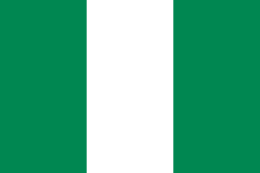
Nigeria is located in western Africa, bordering the Gulf of Guinea, between Benin and Cameroon. The climate varies with altitude; equatorial in the south, tropical in the center, and arid in the north. Natural resources include natural gas, petroleum, tin, iron ore, coal, limestone, niobium, lead, zinc, and arable land. Natural hazards consist of periodic droughts and flooding. The government is a federal republic. Nigeria declared its independence from the United Kingdom on October 1, 1960. Nigeria is Africa’s most populated country with a total population of 206,139,587 which is ranked 7th worldwide (World Bank 2020 est.) Languages include English (official), Hausa, Yoruba, Igbo (Ibo), and Fulani. Industries in Nigeria primarily focus on the production of crude oil, coal, tin, palm oil, peanuts, cotton, rubber, wood, and small commercial ship construction and repair. As of 2018, it is estimated that 40.1% of Nigeria’s population is below the poverty line.
GDP (purchasing power parity):
$1.069 trillion (World Bank 2020 est.)
Country comparison to the world: 24
*Data are in 2020 US dollars
GDP - per capita (PPP):
$5,186.72 (World Bank 2020 est.)
Country comparison to the world: 166
Currency:
1 United States Dollar = 411.50 (2021 est.) Nigerian Naira (NGN)
Environment:
Current issues: soil degradation; rapid deforestation; urban air and water pollution; desertification; oil pollution - water, air, and soil; has suffered serious damage from oil spills; loss of arable land; rapid urbanization
Infant Mortality Rate:
Total: 74.2 deaths/1,000 live births
Country comparison to the world: 12
Male: 80.6 deaths/1,000 live births
Female: 67.3 deaths/1,000 live births (World Bank 2019 est.)
Life Expectancy at Birth:
Male: 54 years
Female: 56 years (UNFPA 2021 est.)
Total Fertility Rate:
5.2 children born/woman (UNFPA 2021 est.)
Country comparison to the world: 18
Literacy:
Definition: age 15 and over can read and write
Total population: 62%
Male: 71.3%
Female: 52.7% (World Bank 2018 est.)
Unemployment rate:
8.53% (World Bank 2019 est.)
Country comparison to the world: 178
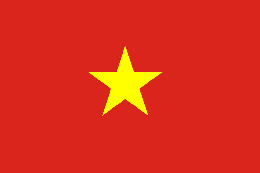
Vietnam is located in Southeast Asia, bordering the Gulf of Thailand, Gulf of Tonkin, and South China Sea as well as China, Laos, and Cambodia. The climate is tropical in the south. In the north, from May to September, it is monsoonal with a hot, rainy season; and from October to March, it is a dry season. Natural resources include phosphates, coal, manganese, rare earth elements, bauxite, chromate, offshore oil and gas deposits, timber, and hydropower. The government is currently in a communist state. Vietnam declared independence from France on September 2, 1945. The population of Vietnam is 97,338,583 people and it is ranked 15 in comparison with the world (World Bank 2020 est.). There is currently 6.7% of the population below the poverty line (World Bank 2018 est.). The languages are broken down in the following manner: Vietnamese (official language), English (increasingly favored as a second language), some French, Chinese and Khmer, mountain area languages (Mon-Khmer and Malayo-Polynesian). The most popular industries are food processing, garments, shoes, machine-building, mining, coal, steel, cement, chemical fertilizer, glass, tires, oil, and mobile phones.
GDP (purchasing power parity):
$842.04 billion (World Bank 2020 est.)
Country comparison to the world: 35
*Data are in 2020 US dollars
GDP - per capita (PPP):
$8,650.65 (World Bank 2020 est.)
Country comparison to the world: 159
Currency:
1 United States Dollar = 22,765 (2021 est.) Vietnamese Dongs (VND)
Environment:
Current issues: logging and slash-and-burn agricultural practices contribute to deforestation and soil degradation; water pollution and overfishing threaten marine life populations; groundwater contamination limits potable water supply; growing urban industrialization and population migration are rapidly degrading environment in Hanoi and Ho Chi Minh City
Infant Mortality Rate:
Total: 15.9 deaths/1,000 live births
Country comparison to the world: 96
Male: 18 deaths/1,000 live births
Female: 13.7 deaths/1,000 live births (World Bank 2019 est.)
Life Expectancy at Birth:
Male: 72 years
Female: 80 years (UNFPA 2021 est.)
Total Fertility Rate:
2 children born/woman (UNFPA 2021 est.)
Country comparison to the world: 157
Literacy:
Definition: age 15 and over can read and write
Total population: 95%
Male: 96.5%
Female: 93.6% (World Bank 2018 est.)
Unemployment rate:
2.39% (World Bank 2020 est.)
Country comparison to the world: 22
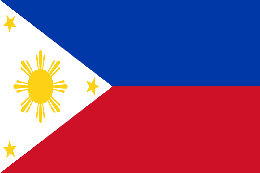
The Philippine archipelago, made up of 7,107 islands, is located in Southeast Asia. The nation experiences a tropical marine climate with monsoons in the northeast from November to April and monsoons in the southwest from May to October. Natural resources include timber, petroleum, nickel, cobalt, silver, gold, salt, and copper. Natural hazards include typhoons, landslides, active volcanoes, destructive earthquakes, and tsunamis. The nation’s population is 109,581,085 (World Bank 2020 est.). Languages spoken include Filipino (based on Tagalog) and English, along with eight major dialects.
GDP (purchasing power parity):
$919.4 billion (World Bank 2020 est.)
Data are in 2020 US dollars*
Country comparison to the world: 29
GDP - per capita (PPP):
$8,390.35 (World Bank 2020 est.)
Data are in 2020 US dollars*
Country comparison to the world: 148
Currency:
1 United States Dollar= 50.81 (2021 est.) Philippine pesos (PHP)
Environment:
Uncontrolled deforestation especially in watershed areas; illegal mining and logging; soil erosion; air and water pollution in major urban centers; coral reef degradation; increasing pollution of coastal mangrove swamps that are important fish breeding grounds, coastal erosion; dynamite fishing; wildlife extinction
Population below poverty line: 16.7% (World Bank 2017 est.)
Infant Mortality Rate:
Total: 21.6 deaths/1,000 live births
Male: 24.1 deaths/1,000 live births
Female: 19.1 deaths/1,000 live births (World Bank 2019 est.)
Country comparison to the world: 77
Life Expectancy at Birth:
Male: 68 years
Female: 76 years (UNFPA 2021 est.)
Total Fertility Rate:
2.5 children born/woman (UNFPA 2021 est.)
Country comparison to the world: 54
Literacy:
Definition: age 15 and over can read and write
Total population: 98.2%
Male: 98.1%
Female: 98.2% (World Bank 2015 est.)
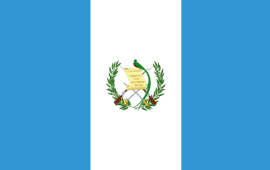
Guatemala is located in Central America, bordering the North Pacific Ocean, between El Salvador and Mexico, and bordering the Gulf of Honduras (Caribbean Sea) between Honduras and Belize. The government is a presidential republic. Guatemala gained independence from Spain in 1821. Guatemala’s total population is 16,858,333 (World Bank 2020 est.). The official language of Guatemala is Spanish, and in 2003 the Law of National Languages officially recognized 23 indigenous languages, including 21 Maya languages, Xinka, and Garifuna. It has a tropical climate in the lowlands but is cooler in the highlands. Guatemala is one of the countries along the Ring of Fire, a belt of active volcanoes and earthquake epicenters bordering the Pacific Ocean; up to 90% of the world's earthquakes and some 75% of the world's volcanoes occur within the Ring of Fire. Guatemala has natural resources of petroleum, nickel, rare woods, fish, chicle, and hydropower. 59.3% of Guatemala’s citizens are below the poverty line according to a 2014 estimate.
GDP (purchasing power parity):
$149.3 billion (World Bank 2020 est.)
Country comparison to the world: 77
*Data are in 2020 US dollars
GDP - per capita (PPP):
$8,854.20 (World Bank 2020 est.)
Country comparison to the world: 150
Currency:
1 United States Dollar = 7.73 (2021 est.) Guatemalan Quetzal (GTQ)
Environment:
Deforestation in the Peten rainforest; soil erosion; water pollution
Infant Mortality Rate:
Total: 20.7 deaths/1,000 live births
Country comparison to the world: 71
Male: 23 deaths/1,000 live births
Female: 18.3 deaths/1,000 live births (World Bank 2019 est.)
Life Expectancy at Birth:
Male: 72 years
Female: 78 years (UNFPA 2021 est.)
Total Fertility Rate:
2.7 children born/woman (UNFPA 2021 est.)
Country comparison to the world: 63
Literacy:
Definition: age 15 and over can read and write
Total population: 81.3%
Male: 86.8%
Female: 76.4% (World Bank 2014 est.)
Unemployment rate:
2.19% (World Bank 2019 est.)
Country comparison to the world: 23
